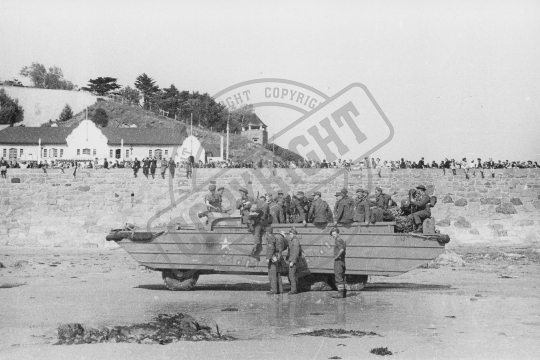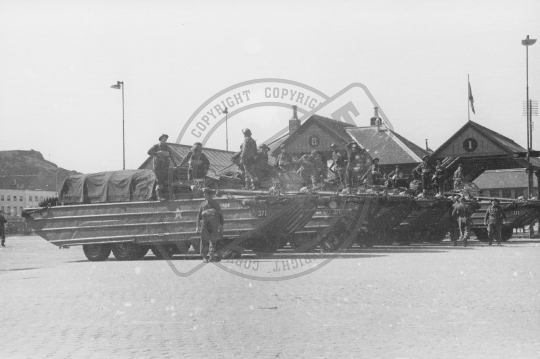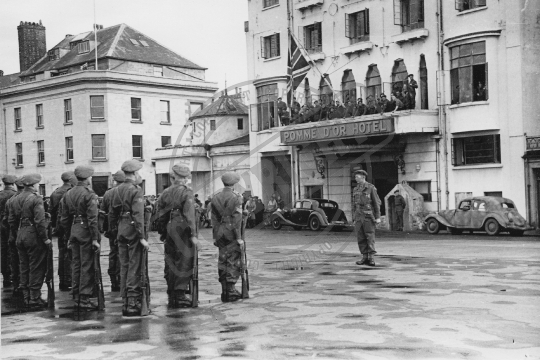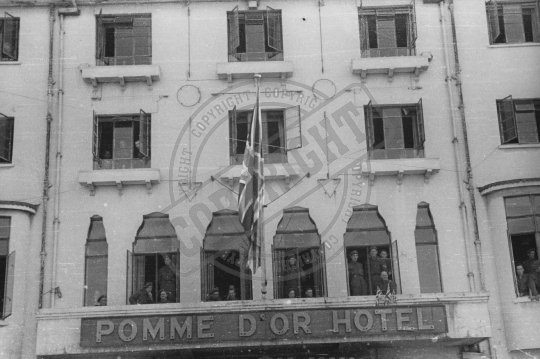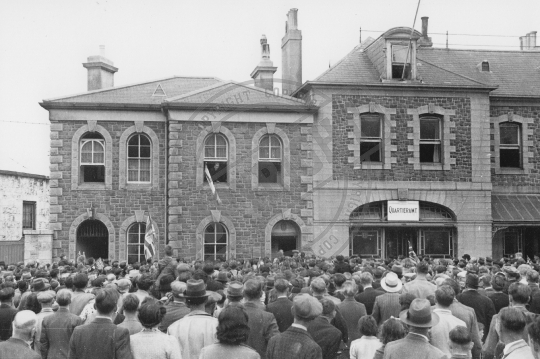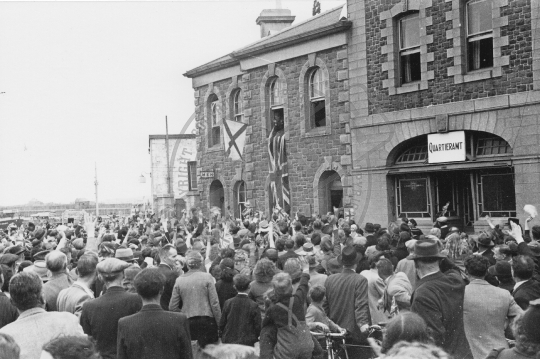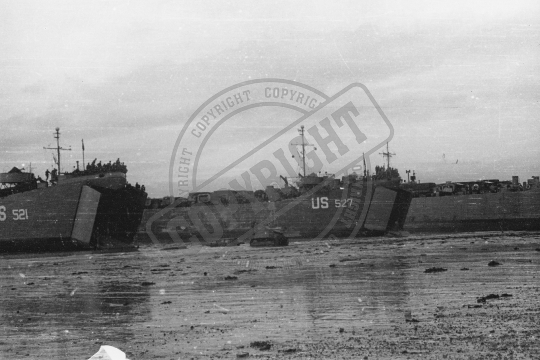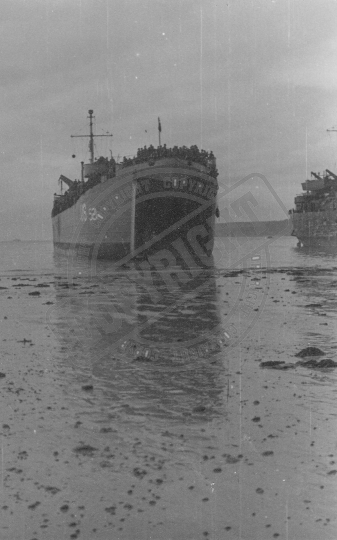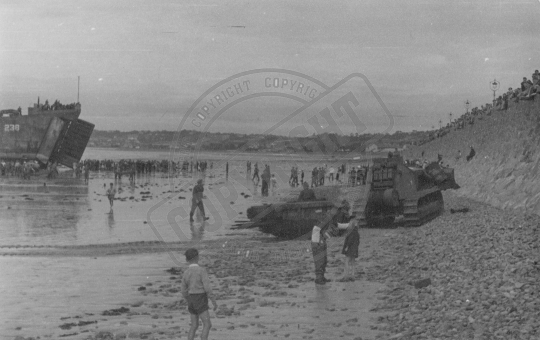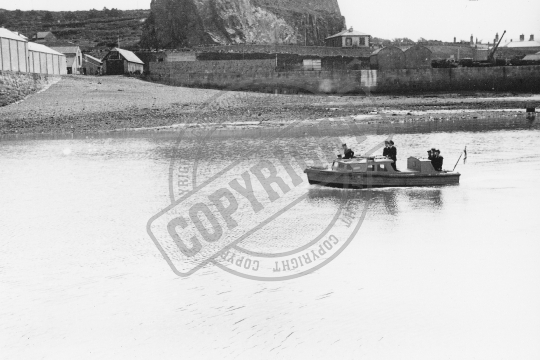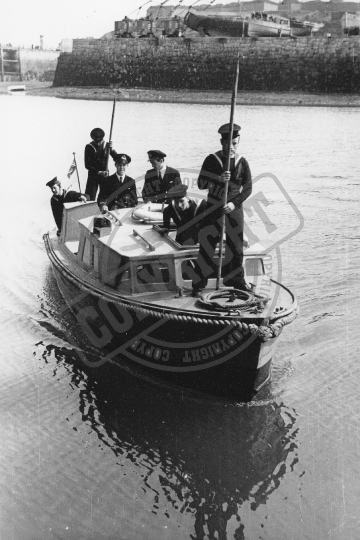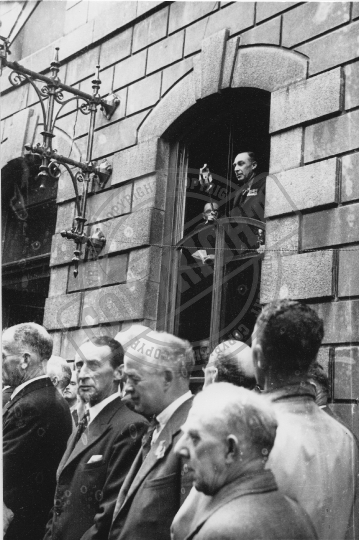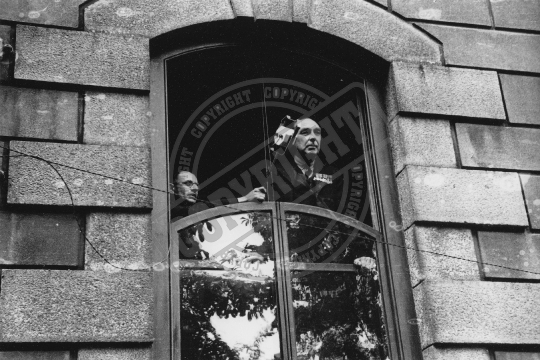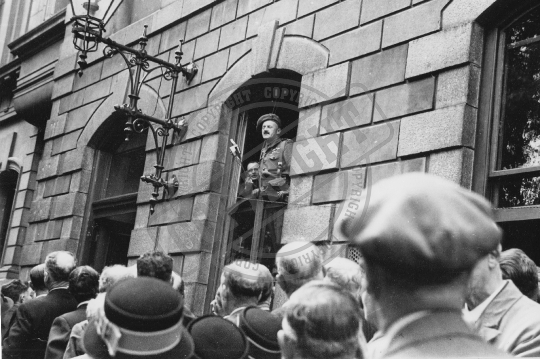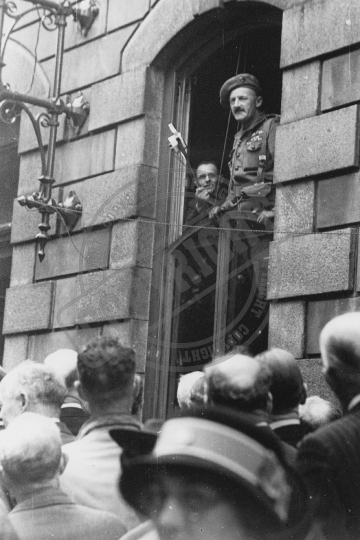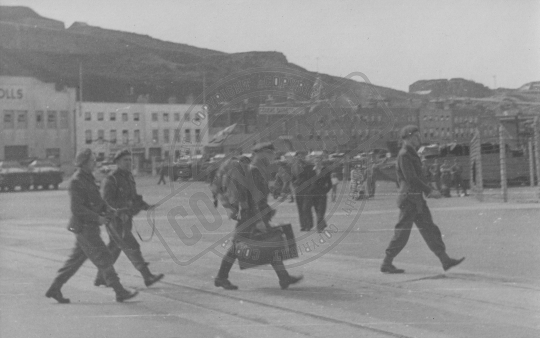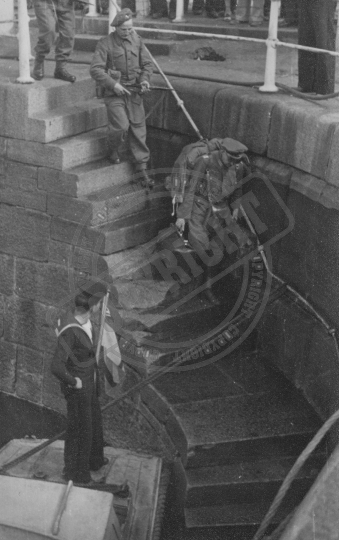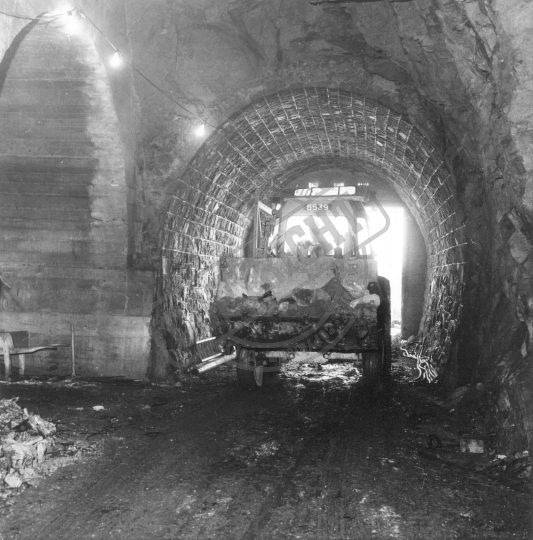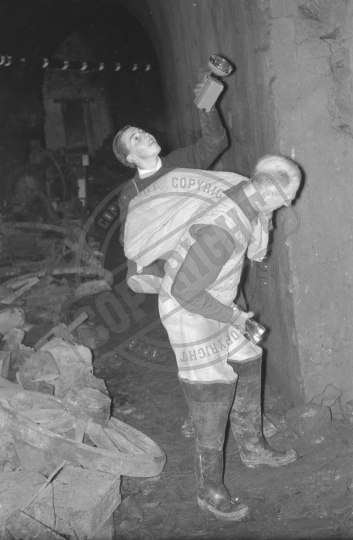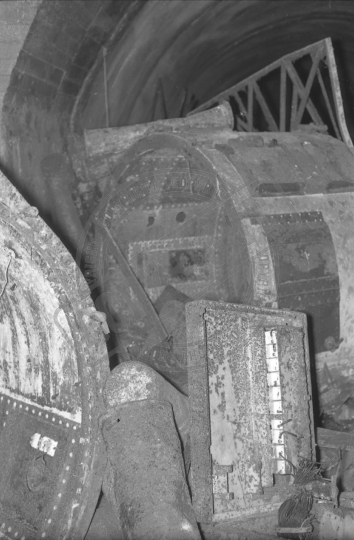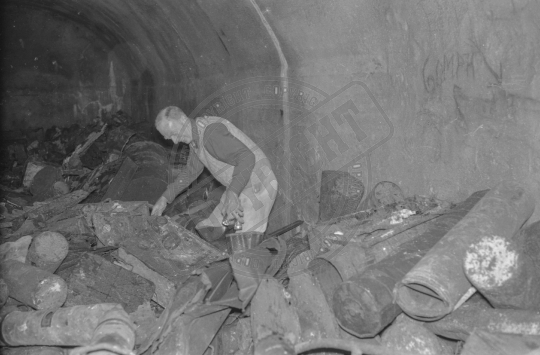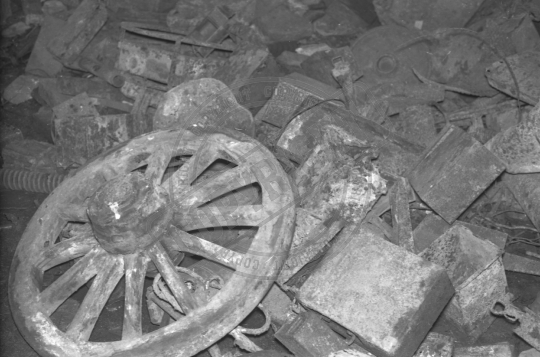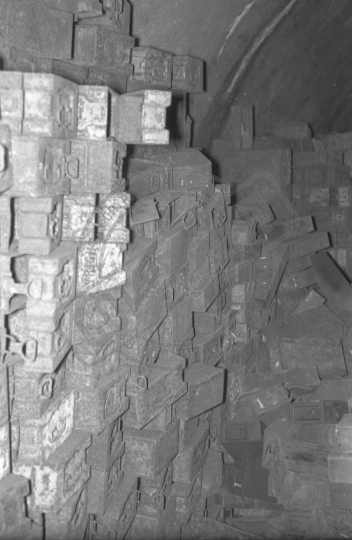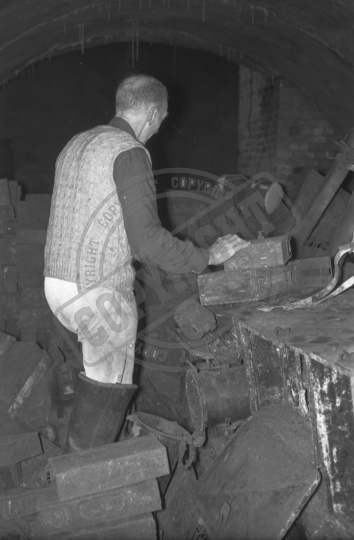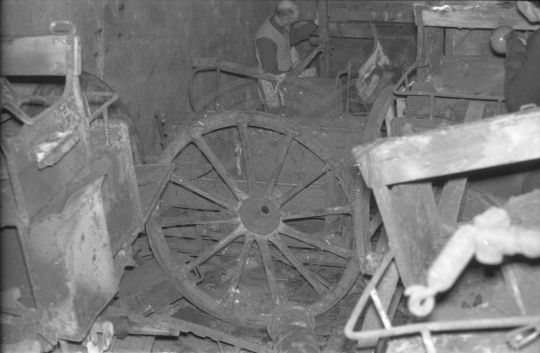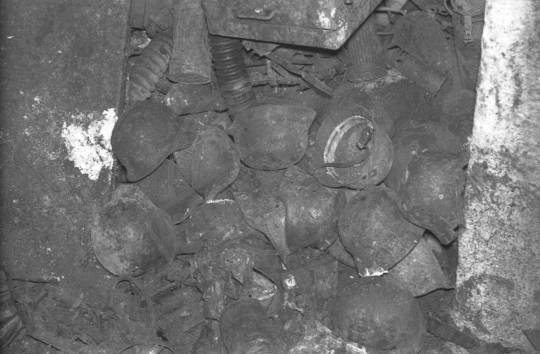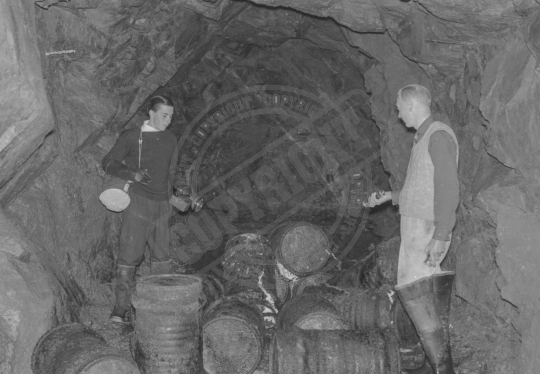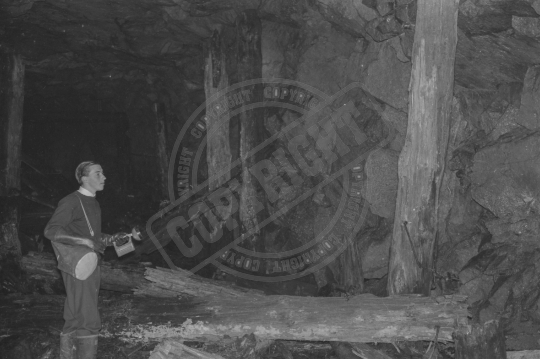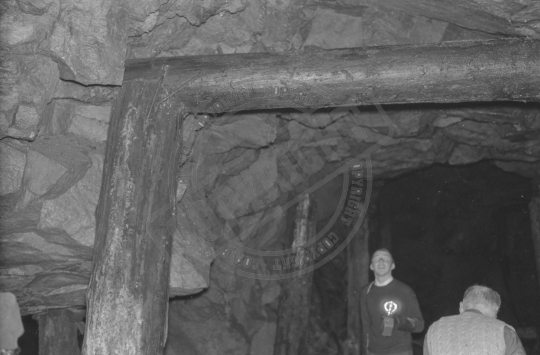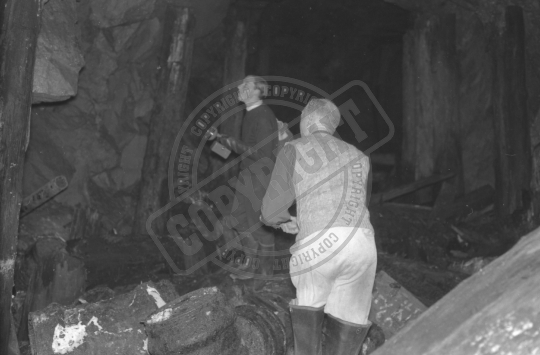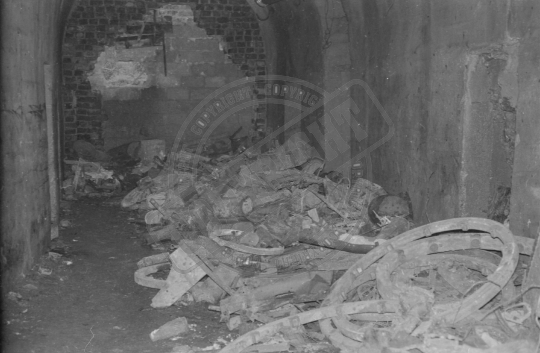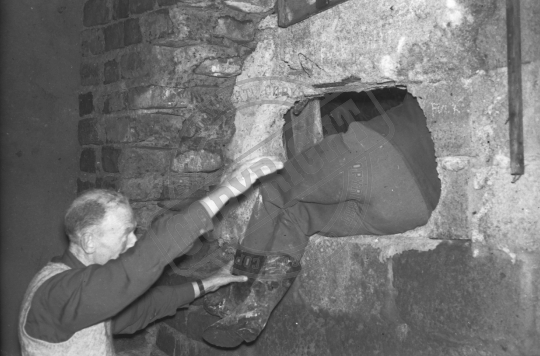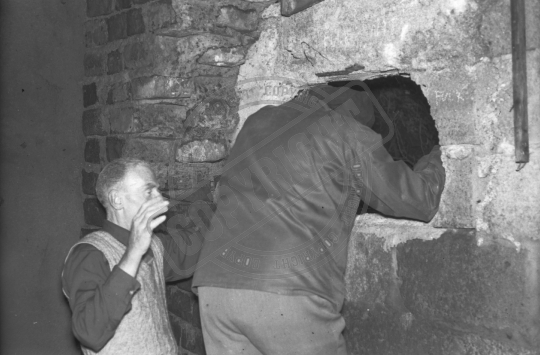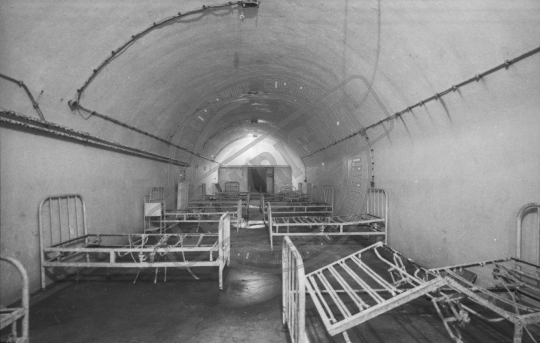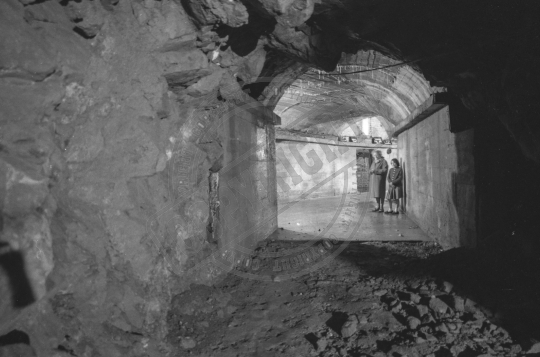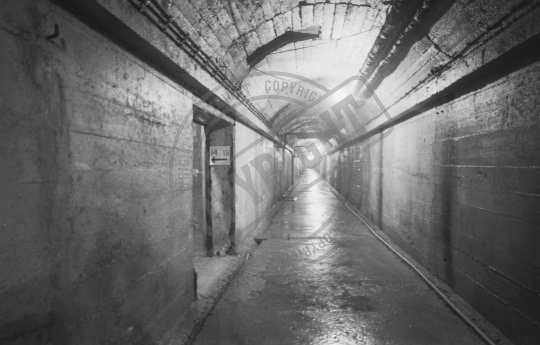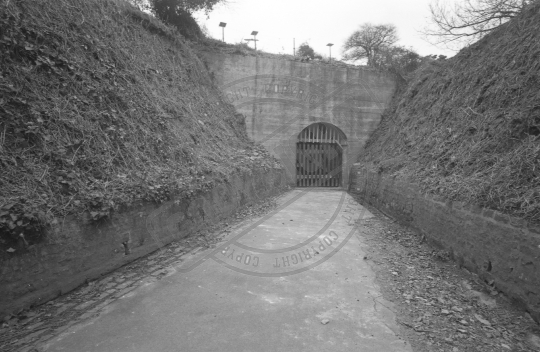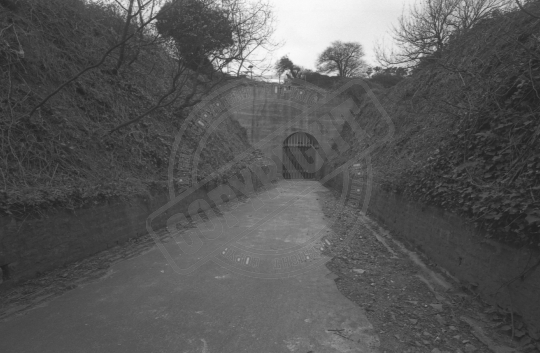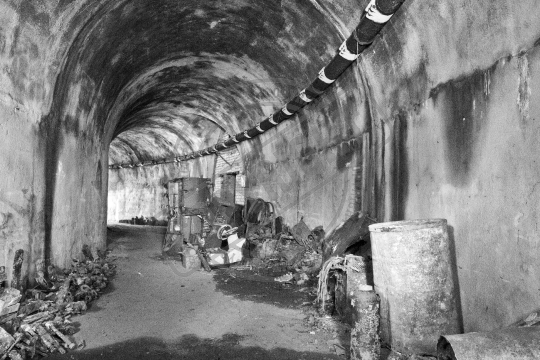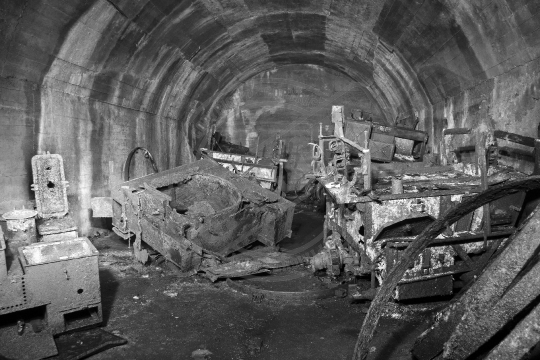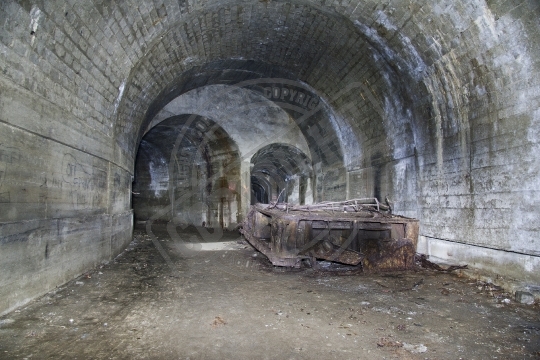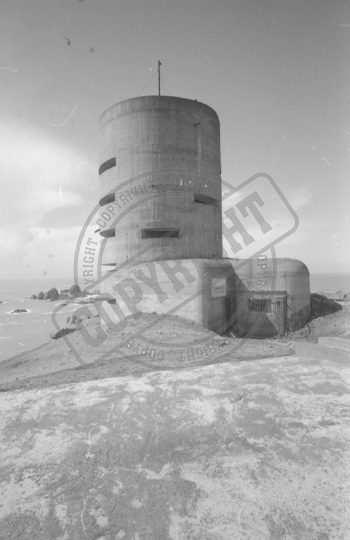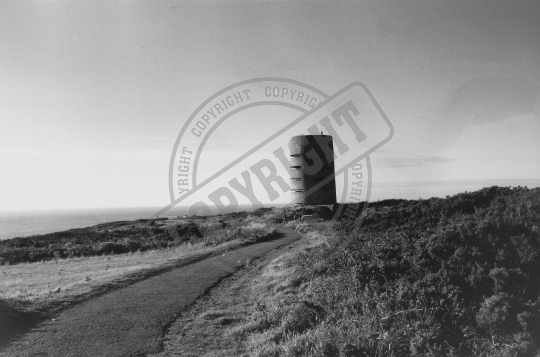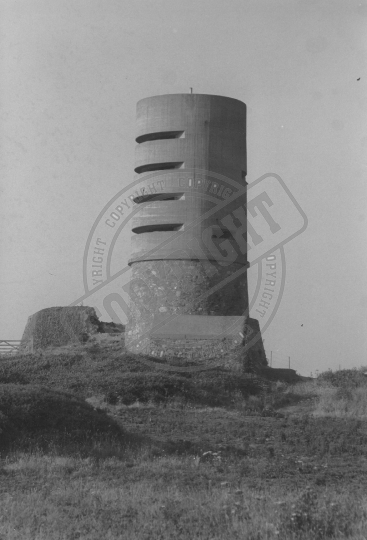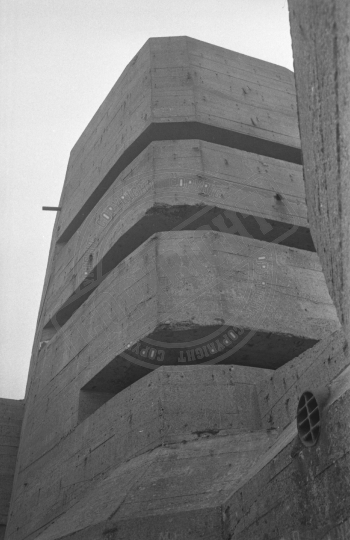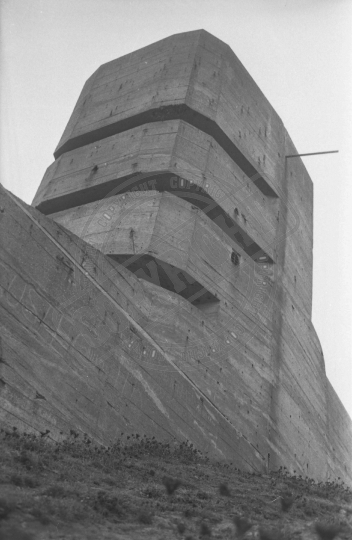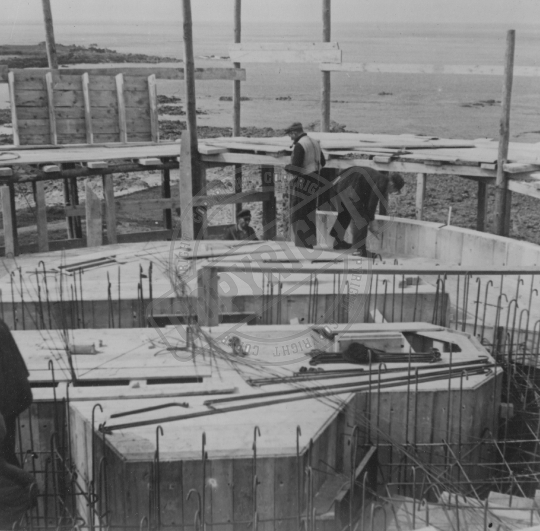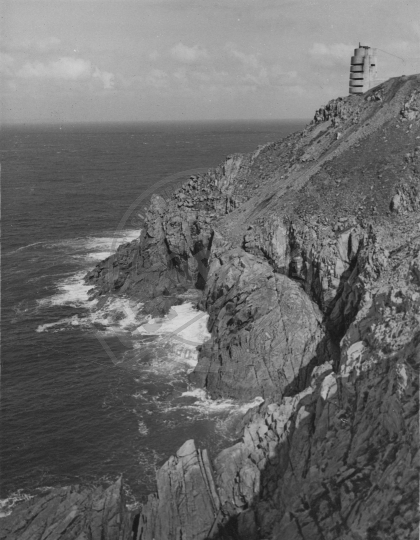Results (394)
CIMM_0035
From the 13th to the 19th May, 1945 the majority of the German garrison were evacuated to POW camps in the UK. Here, German POWs are driven down to West Park, Jersey by DUKW.
CIMM_0034
Troops arrive at the Weighbridge, St Helier aboard six DUKWs pre-loaded with stores having been transported to Jersey on the USS LST 527.
CIMM_0032
British troops gather on the balcony of the Pomme d`Or Hotel following the raising of the Union flag on the afternoon of 9th May 1945.
CIMM_0031
On the afternoon of 9th May, 1945, the first detachment of troops of Task Force 135, led by Colonel Robinson, landed at the Albert Pier. After marching to the Weighbridge, they set up their headquarters at the Pomme d'Or Hotel. Upon their arrival, the Harbourmaster, Captain Richmond, hoisted the Union Flag over the balcony.
CIMM_0029
Crowds gather in anticipation at the harbour offices, St Helier, Jersey on the morning of 9th May 1945 where the advance party Omelette are preparing to address the crowd.
CIMM_0028
Crowds gather outside the harbour office in St Helier, Jersey on 9th May 1945 to witness a large Union Flag being draped from the first floor by Surgeon-Lieutenant McDonald with the assistance of Sub-Lieutenant David Milne.
CIMM_0018
Two of the four Landing Ship Tank, the US LST 521 and 527, that beached in St Aubin’s Bay, Jersey, on Sunday 13th May, 1945.
CIMM_0016
The bow doors of the beached American US LST 521 are open and the crew and British troops wait patiently onboard for the tide to recede sufficiently for the ramp to be lowered so that disembarkation can commence. St Aubin’s Bay, Jersey on Sunday 13th May, 1945.
CIMM_0015
The British troops received a warm welcome from the crowds lining the top of the sea wall as they disembarked from the Landing ship tank. Through the open bow doors of the HM LST 238 the troops step ashore. In the foreground a Military Policeman gives a child some friendly advice about the dangers of being on the beach as the vehicles drive off.
CIMM_0012
The crew of HMS Beagle’s launch make ready to land, and the first Liberators stepped ashore at the end of the Albert Pier, St Helier Harbour, Jersey, on Wednesday morning, 9th May, 1945. The two officers on board were Surgeon-Lieutenant Ronald McDonald, RNVR, and Sub-Lieutenant David Milln, RN.
CIMM_0010
The crew of HMS Beagle’s launch make ready to land, and the first Liberators stepped ashore at the end of the Albert Pier, St Helier Harbour, Jersey, on Wednesday morning, 9th May, 1945. The two officers on board were Surgeon-Lieutenant Ronald McDonald, RNVR, and Sub-Lieutenant David Milln, RN.
CIMM_0009
Addresses to the crowd, from a window of the States Buildings. Many people had gathered in the Royal Square, St Helier, Jersey, for the Hoisting of the Flag Ceremony, on Thursday 10th May, 1945.
CIMM_0008
Addresses to the crowd, from a window of the States Buildings. Many people had gathered in the Royal Square, St Helier, Jersey, for the Hoisting of the Flag Ceremony, on Thursday 10th May, 1945.
CIMM_0007
Lieutenant-Colonel William Robinson, MC, RA, Island commander Jersey, addresses the crowd, from a window of the States Buildings, who had gathered in the Royal Square, St Helier, Jersey, for the Hoisting of the Flag Ceremony, on Thursday 10th May, 1945.
CIMM_0005
Lieutenant-Colonel William Robinson, MC, RA, Island commander Jersey, addresses the crowd, from a window of the States Buildings, who had gathered in the Royal Square, St Helier, Jersey, for the Hoisting of the Flag Ceremony, on Thursday 10th May, 1945.
CIMM_0002
A German Oberleutnant, possibly Richard Bode of the German Secret Field Police (Geheime Feldpolizie or GFP), being escorted across the Weighbridge, St Helier, Jersey, from Force 135 Tactical HQ at the Pomme d’Or Hotel by armed British troops led by Major Margesson, GSOII, towards the New North Quay, on Sunday, 13th May, 1945. Note the DUKWs in the background.
CIMM_0001
A German Oberleutnant, possibly Feldpoliziinspector u. Dienstellenleiter Richard Bode of the German Secret Field Police (Geheime Feldpolizie or GFP), escorted by armed British troops descends the steps at the head of the New North Quay, on Sunday, 13th May, 1945. He was taken by launch to a waiting LSI anchored in St Aubin’s Bay then on to the UK and a POW camp.
TPL_00369
The German tunnel complex Ho.8 at La Valette was eventually cleaned out entirely in the early 1960’s prior to its conversion into an aquarium.
TPL_00352
St Saviour`s tunnel which is featured in many publications as 'The tunnel under the church’ is one of the largest German tunnel complexes in Guernsey. This tunnel was originally constructed as a ration store and in 1944 it was converted into a munitions store. On 9th May 1969 Richard Heaume and John Hayes explored the remains of the tunnel and its contents which had captured the interest of many collectors ever since the scrap men had left in the 1950’s.
TPL_00350
St Saviour`s tunnel which is featured in many publications as 'The tunnel under the church’ is one of the largest German tunnel complexes in Guernsey. This tunnel was originally constructed as a ration store and in 1944 it was converted into a munitions store. On 9th May 1969 Richard Heaume and John Hayes explored the remains of the tunnel and its contents which had captured the interest of many collectors ever since the scrap men had left in the 1950’s.
TPL_00348
St Saviour`s tunnel which is featured in many publications as 'The tunnel under the church’ is one of the largest German tunnel complexes in Guernsey. This tunnel was originally constructed as a ration store and in 1944 it was converted into a munitions store. On 9th May 1969 Richard Heaume and John Hayes explored the remains of the tunnel and its contents which had captured the interest of many collectors ever since the scrap men had left in the 1950’s.
TPL_00347
St Saviour`s tunnel which is featured in many publications as 'The tunnel under the church’ is one of the largest German tunnel complexes in Guernsey. This tunnel was originally constructed as a ration store and in 1944 it was converted into a munitions store. On 9th May 1969 Richard Heaume and John Hayes explored the remains of the tunnel and its contents which had captured the interest of many collectors ever since the scrap men had left in the 1950’s.
TPL_00346
St Saviour`s tunnel which is featured in many publications as 'The tunnel under the church’ is one of the largest German tunnel complexes in Guernsey. This tunnel was originally constructed as a ration store and in 1944 it was converted into a munitions store. On 9th May 1969 Richard Heaume and John Hayes explored the remains of the tunnel and its contents which had captured the interest of many collectors ever since the scrap men had left in the 1950’s.
TPL_00345
St Saviour`s tunnel which is featured in many publications as 'The tunnel under the church’ is one of the largest German tunnel complexes in Guernsey. This tunnel was originally constructed as a ration store and in 1944 it was converted into a munitions store. On 9th May 1969 Richard Heaume and John Hayes explored the remains of the tunnel and its contents which had captured the interest of many collectors ever since the scrap men had left in the 1950’s.
TPL_00344
St Saviour`s tunnel which is featured in many publications as 'The tunnel under the church’ is one of the largest German tunnel complexes in Guernsey. This tunnel was originally constructed as a ration store and in 1944 it was converted into a munitions store. On 9th May 1969 Richard Heaume and John Hayes explored the remains of the tunnel and its contents which had captured the interest of many collectors ever since the scrap men had left in the 1950’s.
TPL_00342
St Saviour`s tunnel which is featured in many publications as 'The tunnel under the church’ is one of the largest German tunnel complexes in Guernsey. This tunnel was originally constructed as a ration store and in 1944 it was converted into a munitions store. On 9th May 1969 Richard Heaume and John Hayes explored the remains of the tunnel and its contents which had captured the interest of many collectors ever since the scrap men had left in the 1950’s.
TPL_00341
St Saviour`s tunnel which is featured in many publications as 'The tunnel under the church’ is one of the largest German tunnel complexes in Guernsey. This tunnel was originally constructed as a ration store and in 1944 it was converted into a munitions store. On 9th May 1969 Richard Heaume and John Hayes explored the remains of the tunnel and its contents which had captured the interest of many collectors ever since the scrap men had left in the 1950’s.
TPL_00339
St Saviour`s tunnel which is featured in many publications as 'The tunnel under the church’ is one of the largest German tunnel complexes in Guernsey. This tunnel was originally constructed as a ration store and in 1944 it was converted into a munitions store. On 9th May 1969 Richard Heaume and John Hayes explored the remains of the tunnel and its contents which had captured the interest of many collectors ever since the scrap men had left in the 1950’s.
TPL_00337
St Saviour`s tunnel which is featured in many publications as 'The tunnel under the church’ is one of the largest German tunnel complexes in Guernsey. This tunnel was originally constructed as a ration store and in 1944 it was converted into a munitions store. On 9th May 1969 Richard Heaume and John Hayes explored the remains of the tunnel and its contents which had captured the interest of many collectors ever since the scrap men had left in the 1950’s.
TPL_00336
St Saviour`s tunnel which is featured in many publications as 'The tunnel under the church’ is one of the largest German tunnel complexes in Guernsey. This tunnel was originally constructed as a ration store and in 1944 it was converted into a munitions store. On 9th May 1969 Richard Heaume and John Hayes explored the remains of the tunnel and its contents which had captured the interest of many collectors ever since the scrap men had left in the 1950’s.
TPL_00334
St Saviour`s tunnel which is featured in many publications as 'The tunnel under the church’ is one of the largest German tunnel complexes in Guernsey. This tunnel was originally constructed as a ration store and in 1944 it was converted into a munitions store. On 9th May 1969 Richard Heaume and John Hayes explored the remains of the tunnel and its contents which had captured the interest of many collectors ever since the scrap men had left in the 1950’s.
TPL_00333
St Saviour`s tunnel which is featured in many publications as 'The tunnel under the church’ is one of the largest German tunnel complexes in Guernsey. This tunnel was originally constructed as a ration store and in 1944 it was converted into a munitions store. On 9th May 1969 Richard Heaume and John Hayes explored the remains of the tunnel and its contents which had captured the interest of many collectors ever since the scrap men had left in the 1950’s.
TPL_00331
St Saviour`s tunnel which is featured in many publications as 'The tunnel under the church’ is one of the largest German tunnel complexes in Guernsey. This tunnel was originally constructed as a ration store and in 1944 it was converted into a munitions store. On 9th May 1969 Richard Heaume and John Hayes explored the remains of the tunnel and its contents which had captured the interest of many collectors ever since the scrap men had left in the 1950’s.
TPL_00330
St Saviour`s tunnel which is featured in many publications as 'The tunnel under the church’ is one of the largest German tunnel complexes in Guernsey. This tunnel was originally constructed as a ration store and in 1944 it was converted into a munitions store. On 9th May 1969 Richard Heaume and John Hayes explored the remains of the tunnel and its contents which had captured the interest of many collectors ever since the scrap men had left in the 1950’s.
TPL_00329
St Saviour`s tunnel which is featured in many publications as 'The tunnel under the church’ is one of the largest German tunnel complexes in Guernsey. This tunnel was originally constructed as a ration store and in 1944 it was converted into a munitions store. On 9th May 1969 Richard Heaume and John Hayes explored the remains of the tunnel and its contents which had captured the interest of many collectors ever since the scrap men had left in the 1950’s.
TPL_00156
Post war photograph inside the large tunnel complex known as the German Underground Hospital in St Andrews showing the layout of the wards.
TPL_00155
Post war photograph inside the large tunnel complex known as the German Underground Hospital in St Andrews. This section shows the lined to unlined junction of the tunnel.
TPL_00151
Post war photograph inside the large tunnel complex known as the German Underground Hospital in St Andrews.
TPL_00149
Post war photograph of the tunnel entrance to HO.7/40 better known as the German Underground Hospital in St Andrews.
TPL_00148
Post war photograph of the tunnel entrance to HO.7/40 better known as the German Underground Hospital in St Andrews.
SP_0012
During the Occupation the German forces excavated numerous tunnels in Guernsey, these were used for various purposes and many still survive today. This tunnel known as 'the tunnel under the church’ has some original equipment remaining. Note the base of the Würzburg radar on the left of the brick entrance.
SP_0010
During the Occupation the German forces excavated numerous tunnels in Guernsey, these were used for various purposes and many still survive today. Here we see a surviving concrete lined chamber within one of the larger tunnel complexes with various limbers and field kitchens still in place today.
SP_0009
During the Occupation the German forces excavated numerous tunnels in Guernsey, these were used for various purposes and many still survive today. Shown here is the southern end of the main gallery with a half track body section in the foreground. The tunnel on the left leads to the central entrance of the complex and the right to the storage area where may limbers and field kitchens survive.
TPL_00371
Post war photograph of the direction finding tower MP2 at La Corbiere, Jersey. The tower was constructed in reinforced concrete and camouflaged to look like it was constructed in stonework in an effort to resemble one of the many Napoleonic period towers that were sited around Jersey.
OA_066
Marinepeilständen und Messtellen (Naval Coastal Artillery Direction and Range-finding Positions). Post–war view of MP 3 at Les Landes, St Ouen, Jersey, covered the sea passage between Jersey and Guernsey. This tower had Gema Seetakt radar apparatus installed that was officially named Funkmessortungsgerät West (Radio Signalling Apparatus or FuMo West).



